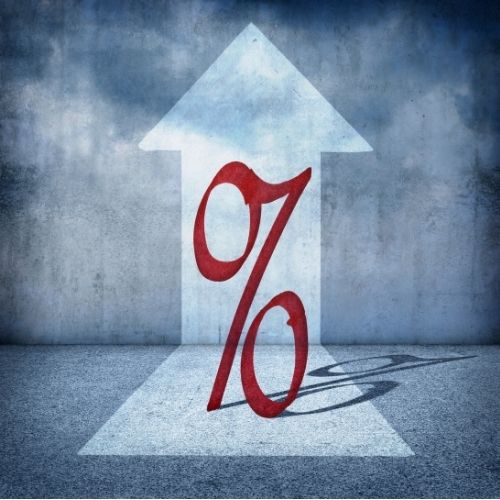
A topical issue for investors right now is the fact that stock prices are affected due to a hike in interest rates. As we currently find ourselves in a rising interest rate cycle, it is critical to consider the effect of interest rate changes in a theoretical and quantitative sense, as opposed to the market sentiment. This article provides valuable insights on the topic.
How does the interest rate cycle work?
Simply put, the interest rate cycle goes hand-in-hand with the economic cycle or the trade cycle. In theory, any movements in interest rates should reflect in the economic or trade cycle. In practise, when the economy experiences a strong growth cycle, central banks will for example increase interest rates to decelerate this economic growth and prevent inflation.
An increase in interest rates in turn typically causes a “cooling down” of the economy, during which the demand for consumer goods and assets decreases. This affects certain sectors more than others with the sectors that are impacted the most usually being retail, banking, transportation, services, manufacturing, and so on.
What are the four economic cycles?
Any movements in the economy go through a cyclical pattern, which are: expansion, peak, contraction and trough. In a cooling down, the economy declines, after which it will reach a trough, during which prices are bottoming. Thereafter, it will generally start to expand again, meaning prices will rise, before it finally reaches a peak, during which the economy is producing at maximum output.
Taking this into consideration, one can draw the conclusion that the interest rate has both a medium- and long-term effect on inflation, which can in turn either increase or decrease stock prices. This also means that fluctuating interest rates must be factored in when conducting a business valuation.
Currently, for example, we find ourselves in a cycle of rising inflation which is marked by rapid and excessive price increases in the economy in the medium term. But in the long term it may drop off again.
How does the interest rate feature in a business valuation?
In the discounted cash flow (DCF) valuation method for example, we use a discount rate (weighted average cost of capital – WACC) to determine the present value of future cash flows. The higher the discount rate, the lower the net present value of future cash flows.
In the weighted average cost of capital (WACC) formula, we consider both a risk-free rate and an after-tax market-related interest rate. Therefore, the higher the risk-free rate and interest rate, the higher the WACC, and therefore, the lower the value of the business.
What determines the risk-free rate?
Most often, the risk-free rate is based on the long-term government bond yield. In practise, this could also be different because there are different types of bonds – with different periods of maturity and different mark to market yields. As a result, you get both short-term and long-term rates.
So, when a business is in its early stages, it will typically use a short-term type of bond as a proxy, which will differ from a well-established business where you would base the risk-free rate used on what is referred to as a “long bond”. The effect of rising interest rates could have a very different effect on the short-term and long-term outlook. Therefore, when you determine the risk-free rate, it is critical to make sure that an appropriate period is applied.
It is also important to consider the interest rate in the cost of debt portion of the WACC, which is the market-related rate at date of valuation. Which also means that the changing interest rate will have an immediate effect on the discount rate.
The role of the capital structure
When looking at the capital structure of the business, it is important to determine how much of it is funded by debt and how much is funded by equity. The more aggressively it is geared and funded by debt, the larger the effect would be of a short-term interest rate. The less aggressively it is geared, the more the rate will be influenced by the long-term rate.
The short-term versus the long-term is thus substantially influenced by the capital structure. The valuer should therefore also be aware that changes in interest rate will have an immediate effect on the business valuation, and make sure that the valuation of the business is adjusted accordingly.
Subscribe for a free trial on a pioneering business valuation application
Worth.Business provides a ground-breaking online valuation application that enables business valuations at a fraction of the usual time and cost, which in turn allows more frequent valuations based on frequently-changing market scenarios. Sign up today to easily adjust interest rates, measure the effect and remain up-to-date with business values.





